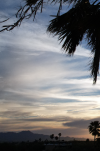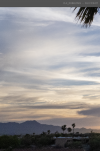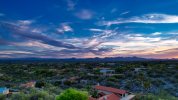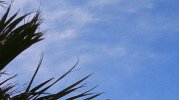The same picture made in JPG and DNG. The DNG is extremely noisy, remarkable worse than the JPEG. This is not a processing issue. The screenshots below are both from Photoshop Camera Raw. There is clearly an issue with the DNG capture. Is there a setting I'm missing? Perhaps a setting conflict or something? I always shoot raw and this is not normal. Even if you open a DNG without processing on a Mac, there is an approximate LUT that displays the RAW image with basic processing. In any case, noise, as seen in the screenshot below is not a processing issue. The RAW image is flat and developing it allows many variations primarily in exposure, and color but this noise is not normal. Anyone know what it is?
You are using an out of date browser. It may not display this or other websites correctly.
You should upgrade or use an alternative browser.
You should upgrade or use an alternative browser.
DNG very noisy
- Thread starter FisherPilot
- Start date
You saved the DNG as a png so it makes it impossible to see what might be brought back with post processing. The jpg.png (?) has already been post processed and I DJI - at least in my Mavic- does a really good job. My guess is I could take the original DNG and make a better file out of it than the JPG has produced. If you look at the foreground you see the jpg has virtually no data in the blacks or so it looks, whereas the dng has some ability to bring back detail in the image. I wonder too if both had the exact same exposure. Without having the DNG itself it's hard to make a judgement but I would of course be surprised if a dng had a poorer final outcome for noise and color after competent post processing than a jpg. Can't tell from this example.
Thanks for looking. The files I attached were screenshots from Photoshop and the artifacts in the DNG are the same in the png as the DNR. The two images are the the result of the JPG+DNG setting in the camera so it virtually the same image in different formats. I'm not an expert by any stretch, but I do work in RAW and I don't understand the noise artifacts in the DNR.
Maybe I'm just making myself crazy, thanks for the help. I just made a raw/jpg test and the artifact in the DNG did resolve when I open both in Camera Raw, so I guess I wasted your time, sorry.
We can't see the actual file to tell, but the usual explanation when people complain about poor quality DNG files is that they are looking at the jpg thumbnail that's included in the dng file.Maybe I'm just making myself crazy, thanks for the help. I just made a raw/jpg test and the artifact in the DNG did resolve when I open both in Camera Raw, so I guess I wasted your time, sorry.
The way to confirm this is to check the image size when you think it looks bad..
DNG is raw image, which is digital equivalent to unprocessed negative.
With mostly very high megapixel counts even in smallest sensors that means tiny pixels, which are noisy in anything but good light.
And low brightness areas of image receive even less light meaning even lower signal to noise ratio.
Automatic processing in cameras etc has long used lots of noise reduction to cover up that mess.
But when you open raw image in any software it uses some default presets for processing, which are usually light on noise reduction.
Simply because noise reduction processing starts also eating smaller and especially lower contrast details.
Though that DNG has already had lots of NR processing done to it:
There's no really ugly chroma (colour) noise and only lot less disturbing luminance noise is visible.
Because of the way demosaicing reconstructs colours of final image pixels from Bayer sensor's data, noise in sensor's single pixel affects also to colour values of surrounding pixels in processed image.
With mostly very high megapixel counts even in smallest sensors that means tiny pixels, which are noisy in anything but good light.
And low brightness areas of image receive even less light meaning even lower signal to noise ratio.
Automatic processing in cameras etc has long used lots of noise reduction to cover up that mess.
But when you open raw image in any software it uses some default presets for processing, which are usually light on noise reduction.
Simply because noise reduction processing starts also eating smaller and especially lower contrast details.
Though that DNG has already had lots of NR processing done to it:
There's no really ugly chroma (colour) noise and only lot less disturbing luminance noise is visible.
Because of the way demosaicing reconstructs colours of final image pixels from Bayer sensor's data, noise in sensor's single pixel affects also to colour values of surrounding pixels in processed image.
Thanks for that explanation. The DNG raw, for whatever technical reason (which you clearly understand, and I don't) displays much more of a "noise pattern" than my Canon RAW and I made presumptuous assumptions about their similarities. I didn't realize that the "noise" in the DNG image was in fact part of the full raw capture and that noise reduction processing was going to fix that issue and not degrade the clarity of the rest of the image. Well, live and learn and thanks again.
Attachments
It's surprising that your DNG is much noisier than your RAW. DNG are processed but not very much and I would not have expected them to have much more noise than RAW. I find that odd. The fact that the highly processed jpg has had a lot of noise reduction applied is understandable. I just pulled up a CRW file that was somewhat underexposed and showed a fair bit of noise (not as bad as yours) and converted it to DNG. Virtually no difference. I didn't and don't think that DNG files are inherently more noisy than RAW files per se.Thanks for that explanation. The DNG raw, for whatever technical reason (which you clearly understand, and I don't) displays much more of a "noise pattern" than my Canon RAW and I made presumptuous assumptions about their similarities. I didn't realize that the "noise" in the DNG image was in fact part of the full raw capture and that noise reduction processing was going to fix that issue and not degrade the clarity of the rest of the image. Well, live and learn and thanks again.
Yes, that's what threw me, although in a way it's a lucky accident because I think I have a better handle on processing my images now. I've uploaded a comparison of the Canon CR2 and DJI DNG, a 400% crop from PS Camera Raw with no adjustments.It's surprising that your DNG is much noisier than your RAW. DNG are processed but not very much and I would not have expected them to have much more noise than RAW. I find that odd. The fact that the highly processed jpg has had a lot of noise reduction applied is understandable. I just pulled up a CRW file that was somewhat underexposed and showed a fair bit of noise (not as bad as yours) and converted it to DNG. Virtually no difference. I didn't and don't think that DNG files are inherently more noisy than RAW files per se.
Attachments
How much there's noise in data captured by sensor depends on couple factors.
First is sensor's size and focal ratio of lens, which limit absolute max amount of photons that can be captured per time unit.
Obviously bigger sensor has more overall area to capture light and there's also more room for structure of individual pixels.
And sensor in average consumer drone is from small to really small, just like in phones.
But also f-ratio affects it through brightness of image projected by the lens.
No matter the focal length, same f-ratio lenses produce equally bright image per surface area unit.
So "faster" lens could actually compensate for smaller sensor area, but difference is big.
(f/2 collects twice the light of f/2.8, which is twice of f/4)
Other factor is technology of sensor.
Better sensor design minimizes amount of photons not collected by actual photosite of the pixel.
Then there can be variation in photosite's ability to convert photons into electric charge.
Also amount of noise introduced into signal before it's converted to digital signal varies.
(amplifier and ADC circuitry)
Though nowadays cameras can apply some noise removal processing even to raw data.
IIRC Canon was one of the first to do that.
Also Sony is known for NR, which is bad for astrophotography because of possibly thinking stars being noise and removing them.
First is sensor's size and focal ratio of lens, which limit absolute max amount of photons that can be captured per time unit.
Obviously bigger sensor has more overall area to capture light and there's also more room for structure of individual pixels.
And sensor in average consumer drone is from small to really small, just like in phones.
But also f-ratio affects it through brightness of image projected by the lens.
No matter the focal length, same f-ratio lenses produce equally bright image per surface area unit.
So "faster" lens could actually compensate for smaller sensor area, but difference is big.
(f/2 collects twice the light of f/2.8, which is twice of f/4)
Other factor is technology of sensor.
Better sensor design minimizes amount of photons not collected by actual photosite of the pixel.
Then there can be variation in photosite's ability to convert photons into electric charge.
Also amount of noise introduced into signal before it's converted to digital signal varies.
(amplifier and ADC circuitry)
Though nowadays cameras can apply some noise removal processing even to raw data.
IIRC Canon was one of the first to do that.
Also Sony is known for NR, which is bad for astrophotography because of possibly thinking stars being noise and removing them.
Similar threads
- Replies
- 1
- Views
- 1K
- Replies
- 36
- Views
- 6K
- Replies
- 1
- Views
- 2K
- Replies
- 24
- Views
- 6K
- Replies
- 2
- Views
- 2K
DJI Drone Deals
New Threads
-
Last Week's Most Popular Topics (January 10, 2026)
- Started by msinger
- Replies: 0
-
Mavic 4 bought in Japan, currently in US, and needs warranty repair. What are my options?
- Started by Theoriginalgregtoo
- Replies: 7
-
-
-
Members online
Total: 2,462 (members: 13, guests: 2,449)















